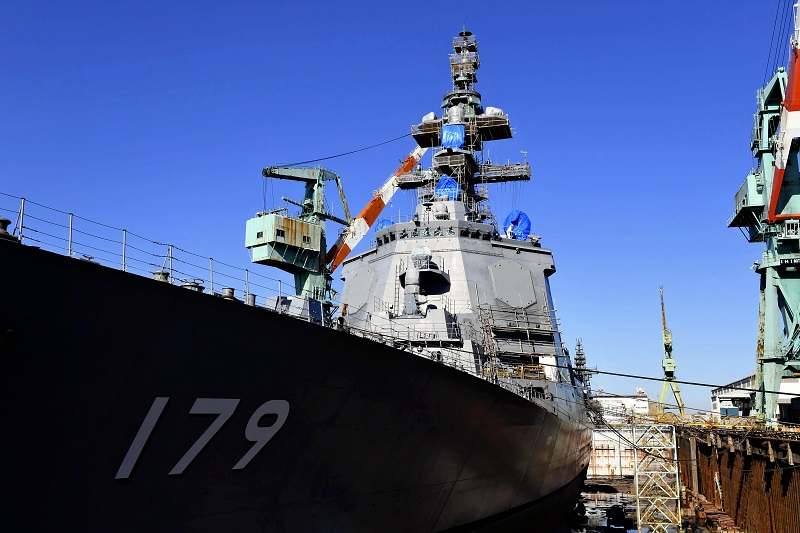Defense Ministry to include hypersonic missile interceptors in FY23 budget requests

A state-of-the-art Aegis-equipped vessel is seen in Yokohama in January 2020.
17:03 JST, August 23, 2022
The Defense Ministry’s budget request for fiscal 2023 is to include the installation of improved missiles on newly planned Aegis-equipped ships, with the aim of possessing capabilities to intercept hypersonic weapons to counter China and North Korea, which are pursuing missile development.
The ministry also plans to introduce unmanned combat areal vehicles to expand use of unmanned equipment, according to several government officials.
The government has vowed to drastically strengthen defense capabilities within five years. The initial budget request is expected to reach a record ¥5.5947 trillion. The final amount will be even larger, as separate requests are made for items for which no amount is indicated at the initial stage.
The ministry plans to build two Aegis-equipped ships that will carry SM-6 anti-aircraft missiles following a decision to abandon plans for an Aegis Ashore ground-based missile interception system.
Hypersonic missile interception capabilities have been included in the latest budget request.
The Aegis-equipped ships are also expected to be equipped with improved versions of the Ground Self-Defense Force’s Type-03 medium-range surface-to-air missiles.
Hypersonic weapons developed by countries such as China and Russia fly at more than five times the speed of sound and at low altitudes. Unlike conventional ballistic missiles, which have parabolic trajectories, hypersonic weapons have irregular trajectories, making them difficult to intercept.
The ministry wants to enhance capabilities to predict the trajectories of and intercept enemy missiles.
The new Aegis-equipped vessels are expected to operate mainly in the Sea of Japan on the lookout for North Korean missiles.
Because hypersonic weapons are difficult to detect with ground-based radar, the ministry has included in the budget requests research on the detection and tracking of hypersonic weapons with a satellite constellation, a network of small satellites.
The ministry also plans to obtain attack drones for the first time. Research will be initiated on the deployment of unmanned ground vehicles for GSDF reconnaissance to accurately determine enemy locations and improve the accuracy of attacks.
The ministry is also aiming for the swift production and deployment of long-range cruise missiles based on improved Type-12 surface-to-ship missiles, on the assumption that the government will greenlight the possession of counterattack capabilities that can destroy enemy missile launch sites and other targets for self-defense purposes.
"Politics" POPULAR ARTICLE
-

Japan to Support Central Asian Logistics Route That Bypasses Russia, Plan to Be Part of Upcoming Summit in Tokyo
-

Japan to Tighten Screening of Foreigners’ Residential Status by Providing Information of Nonpayment of Taxes
-

Takaichi Cabinet Approval Holds at 72% as Voters Back Aggressive Fiscal Stimulus, Child Benefits
-

Chinese, Russian Bombers Flew Unusual Path by Heading Toward Tokyo; Move Likely Meant to Intimidate Japan
-

Takaichi Meets Many World Leaders at G20 Debut in Johannesburg; Speaks with Heads of Countries Including Italy, U.K., Germany, India
JN ACCESS RANKING
-

Keidanren Chairman Yoshinobu Tsutsui Visits Kashiwazaki-Kariwa Nuclear Power Plant; Inspects New Emergency Safety System
-

Imports of Rare Earths from China Facing Delays, May Be Caused by Deterioration of Japan-China Relations
-

Tokyo Economic Security Forum to Hold Inaugural Meeting Amid Tense Global Environment
-

University of Tokyo Professor Discusses Japanese Economic Security in Interview Ahead of Forum
-

Japan Pulls out of Vietnam Nuclear Project, Complicating Hanoi’s Power Plans

























